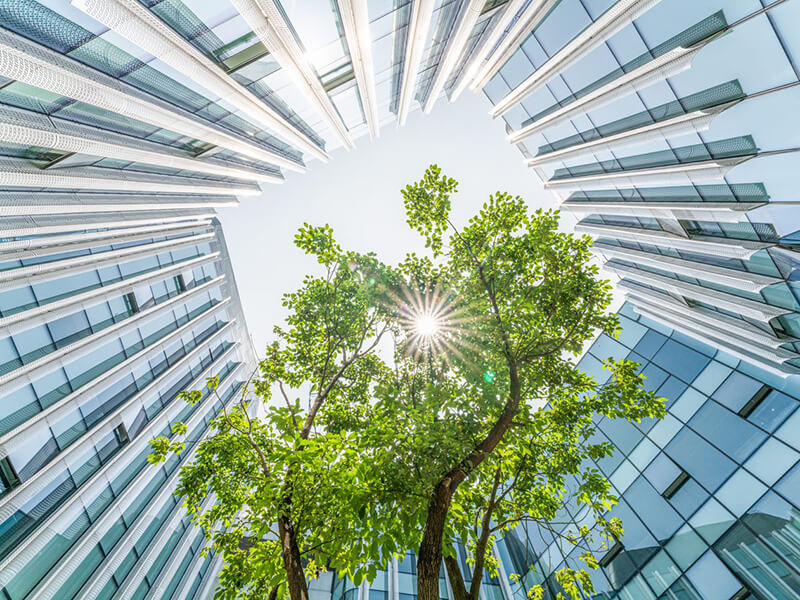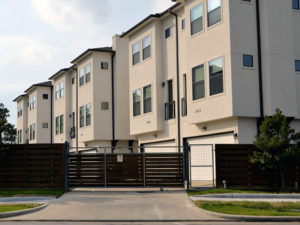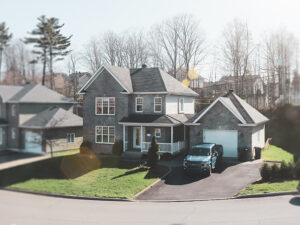Healthy Buildings: A Primary Way to Combat Illness

The past year of pandemic, with its widespread “stay at home” orders, focused public concern on air quality, toxicity, cleaning agents and sterilization methods. This is especially true for hotels, restaurants, transportation industries and various others that serve large crowds. Particularly hard hit since March 2020 are service providers that deal in face-to-face situations.
It is no exaggeration to say that businesses and industries unable to pivot quickly to meet new demands for health and safety were left behind, and they will face greater comeback challenges when restrictions are relaxed or lifted completely.
The pandemic changed the focus of business; priorities had to be reevaluated in the midst of chaos, and health and safety of both employees and the public became the number one concern. It remains so today.
The Importance of a Healthy Environment
The groundwork for healthy buildings was laid more than two decades ago, with green building practices. While sustainability and energy efficiency today are decidedly mainstream concerns, builders and consumers alike now recognize that overall building health goes far beyond the principles of sustainability and resource conservation. The fact that the built environment is a prime determinant of human health is widely acknowledged by environmentalists, physicians, mental health professionals and social workers.
Homes and office buildings are, in effect, miniature eco-systems, and they affect human wellness in myriad ways. Statistics confirm that Americans spend as much as 90% of their time indoors or in enclosed spaces. It is also widely acknowledged that more should be done to assure human health and safety in the workplace and in public spaces as well as at home.
The practices, procedures and products that are key components of healthy buildings constitute a new paradigm. Solutions had already been envisioned prior to the pandemic, but the worldwide spread of an unknown virus was a catalyst to propel those solutions forward.
The practices, procedures and products that are key components of healthy buildings constitute a new paradigm. Solutions had already been envisioned prior to the pandemic, but the worldwide spread of an unknown virus was a catalyst to propel those solutions forward.
While it has long been known that indoor pollutants contribute to jobsite inefficiency in terms of lost time and employee healthcare costs, not enough emphasis has been placed on overall air quality until now. The recognition that heating and air conditioning systems can transmit disease will should prompt revolutionary changes to ventilation systems, filtration and manual heating and cooling controls. Lighting quality and the potential for using light to sterilize indoor surfaces is another area that bears more research. The benefits of natural light and outdoor views are proven to improve concentration and alter moods. In buildings of the future, it may no longer be enough to eliminate chemical pollutants and synthetic materials. They are destined to become more organic spaces, in all the best ways, offering more comfort and designed to promote well-being.
Reducing the Scope of an Ongoing Health Crisis
At the very least, response to the global pandemic has focused public attention on what can and must be done to ensure that buildings do not contribute to a growing health problem for this country, and for the world.
In 2014, Mahesh Ramanujam, COO of the United States Green Building Council, spoke in Beijing at the Tenth International Conference on Green and Energy-Efficient Building and New Technologies and Products Expo.
He noted that there is one undeniable truth. “Buildings have a lot to do with our external and internal environment, and have a major impact on both our health and the health of future generations,” he said.
This prescient leader also stated at that time:
“The built environment has profound effects on human health and the world around us. At their best, our buildings and communities are powerful promoters of health and well-being. At their worst, they contribute to some of the key public health concerns of modern society, from asthma to cancer to obesity.
“While health has always been at the core of green building, our world today is confronting massive health challenges that are assaulting “our complete physical, mental and social well-being,” the World Health Organization’s definition of human health. As these challenges continue to mount all of us have an obligation to be more purposeful when addressing how human health relates to our built environment.”
Since 2014, major changes have been introduced in building technology to focus on new categories of environmental impact. The Leadership in Energy and Environmental Design (LEED) certification, first developed in 1993, has evolved from the original version that simply sought to minimize the damage caused by a building project. It now focuses on broad new categories that address human health, biodiversity and community, climate change, water resources, the green economy and natural resources.
By improving the physical space of both businesses and homes though implementation of new technology and a renewed emphasis on quality of life, the benefits accrue to individuals as much as to business success and profitability.
Learning Lessons from Pandemic Response
Over the course of the last year nearly every business sector has been adversely affected by closures, restrictions and limitations. The tidal wave of financial and logistical consequences is only now being tallied. As business begins to ramp up, it should be obvious that some alterations to business as usual will become permanent.
There will undoubtedly be stringent new requirements in place for sanitation and individual protection, perhaps for routine health testing and evaluation. The public demand for services has also changed, with online ordering, home delivery and take-out food seen, at least in some areas, as the new normal.
Whether travel restrictions are rolled back completely or new mandates take their place remains to be determined. But such things as contact-free ordering and payment options, home deliveries, curbside pickup of groceries, and a modified form of social distancing are likely to be with us for the foreseeable future. Workplace planners are already rethinking options for offices, warehouses and manufacturing facilities in light of new findings regarding disease transmission during the pandemic. The changes prompted by remote employment and the online business are already apparent.
Obviously, some business segments have been affected more than others, notably convention facilities, sports venues and the cruise industry. Alll are reviewing options as they plan to move into a post-COVID world.
Whatever that world holds in store, there is widespread agreement that the emphasis will remain on health and safety, human well-being and protection. There is a new and welcome awareness of the environmental factors over which we have some control, specifically the buildings in which we spend the majority of our time.
Sources
https://www.usgbc.org/articles/healthy-buildings-and-healthy-people-next-generation-green-building



